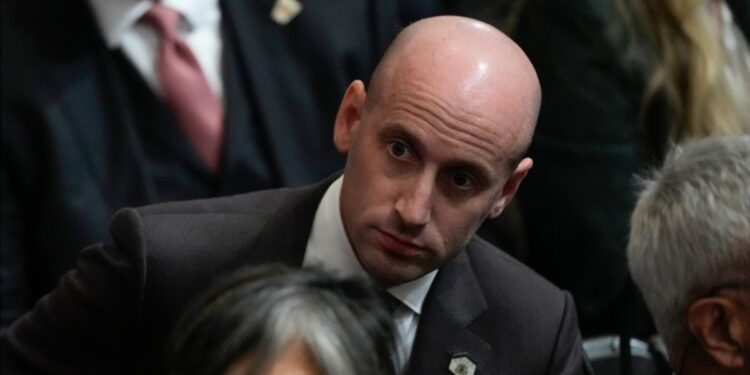On his first day back in office, President Donald Trump signed around 10 executive orders to restrict immigration to the United States. “With these actions, we will begin the complete restoration of America and the revolution of common sense,” he said during his inauguration speech. “It’s all about common sense.”
The promises, many pushed by top advisor Stephen Miller, were striking. Trump vowed to declare a “national emergency” and “send troops” to the US-Mexico border (even though border crossings have reached a low point at the end of the Biden administration), among other major actions. Asylum seekers and refugees will feel the consequences. And the executive orders are bound to get caught in legal fights.
Here’s a recap of Trump’s day-one executive orders on immigration:
BIRTHRIGHT CITIZENSHIP
True to his campaign promise, Trump did issue an order to go into effect in 30 days to deny citizenship to certain US-born children if the mother does not have legal status or is on a temporary visa at the time of birth and the father is not a US citizen or legal permanent resident. That may sound complex. But the reality is simple: If Trump gets his way, no longer does being born in the US mean you’re a citizen.
It didn’t take long for immigrant rights groups and several states to file lawsuits challenging the executive for violating the 14th Amendment of the constitution—and more than a century of legal precedent—that guarantees birthright citizenship. (We have written about the long crusade to kill birthright citizenship before.)
REFUGEES AND ASYLUM SEEKERS
Trump signed a blanket suspension on the resettlement of refugees until it “aligns with the interests of the United States.” That suspension will go into effect on Monday, January 27 and last at least four months. It also mandates that states and local jurisdictions should have a larger role in the resettlement process. Alongside the suspension, Trump is bringing back the so-called “Remain in Mexico” policy: forcing tens of thousands of asylum seekers and migrants to wait in dangerous US-Mexico border towns as their cases go through the backlogged immigration courts. His administration also ended the use of the Biden-era CBP One phone application for asylum seekers to present at the border lawfully. (Appointments were canceled as a result, leaving thousands of people stranded.) Finally, he cited extraordinary presidential authorities to declare an “invasion” at the border and allow government officials to “repel, repatriate, or remove” migrants, including asylum seekers.
FAMILY SEPARATION
As part of an executive order to protect “the American people against an invasion,” Trump revoked several presidential actions taken during the Biden administration. That includes an executive order that established a Department of Homeland Security task force to work on the reunification of families that had been separated at the border during the first Trump administration. As of March 2024, the task force had helped 795 children reunite with their parents. As I have reported, many families are still separated seven years later.
MASS DEPORTATION
Many of Trump’s executive orders boost the detention and deportation apparatus his administration would need to conduct mass deportations. That includes the US military. Trump has declared a “national emergency” at the southern border in an effort to unlock federal authorities and additional resources and called on the Armed Forces—including reserves and the National Guard—to help the Department of Homeland Security with immigration enforcement. It also instructs the Department of Defense to provide support in the form of detention space and transportation airplanes.
ALIEN ENEMIES ACT
Trump is moving to designate drug cartels and certain gangs—such as MS-13 and Tren de Aragua—as foreign terrorist organizations. This action prepares the terrain for Trump to invoke the Alien Enemies Act of 1798 to expedite detentions and deportations without due process. During his inauguration speech, the president said he would use this wartime statute to unleash the “full and immense power of federal and state law enforcement” against what he calls an “invasion.”
Despite the breadth and depth of these presidential actions, this is just the beginning. The Trump administration is also upending the immigration system in hard-to-track ways: He has already fired several top officials in charge of the Department of Justice’s Executive Office for Immigration Review that oversees the immigration courts, where there are an estimated 3.7 million pending cases. Trump also revoked a policy by the Biden administration discouraging US Immigration and Customs Enforcement (ICE) from arresting immigrants “in or near protected areas” such as schools, hospitals, and churches.
The federal government is on the attack. The administration has further signaled it will attempt to defund sanctuary cities and deny grants to organizations offering services to immigrants. It will also double down on cooperation agreements between ICE and local and state sheriffs and police departments. States and local authorities can still stand up to Trump’s mass deportation plans. That will require key Democratic officials to take a stance. Notably, New York Mayor Eric Adams attended Trump’s inauguration and later sat down for an interview with Tucker Carlson, instead of fighting back.







